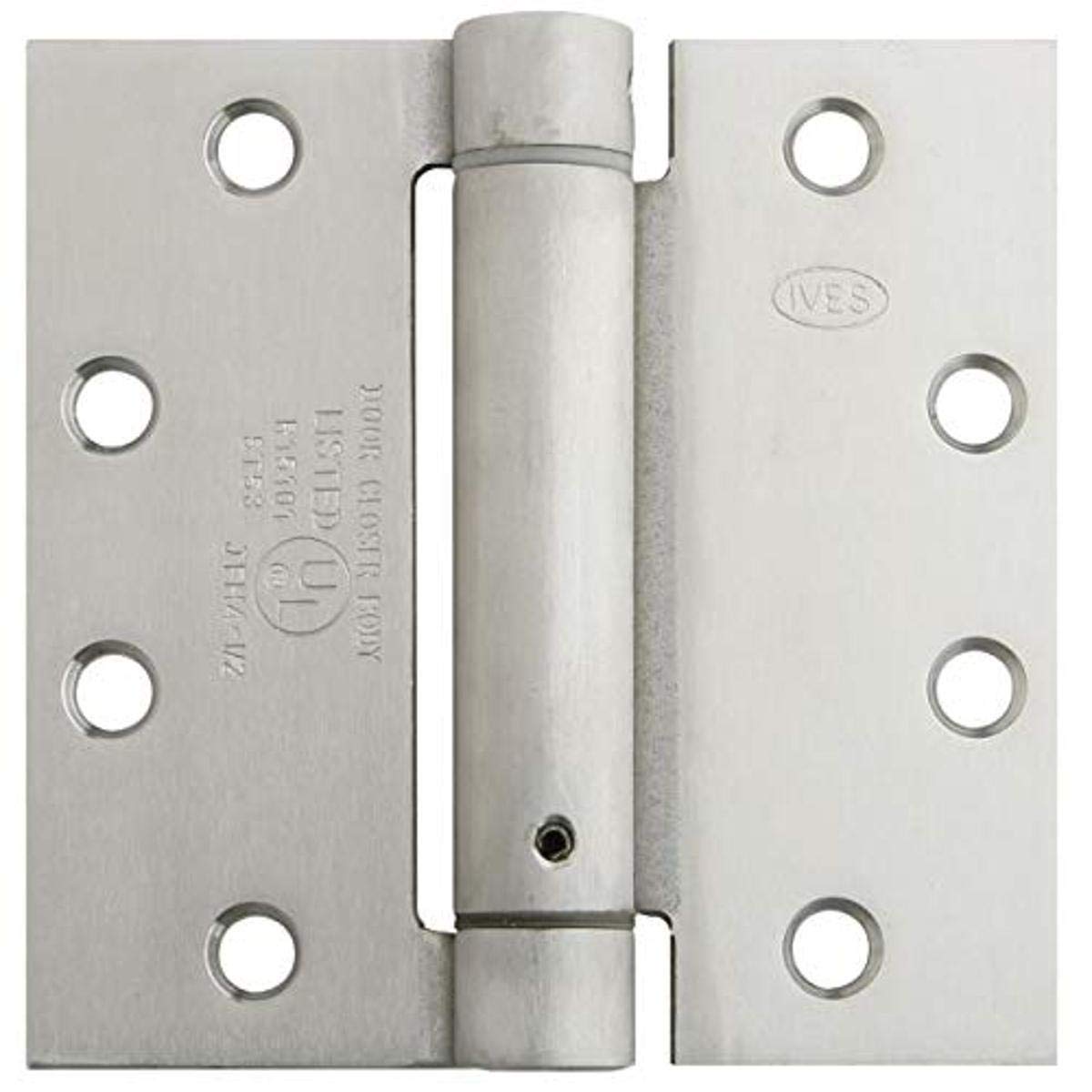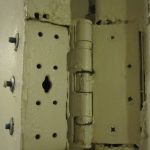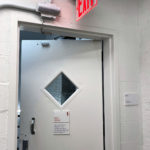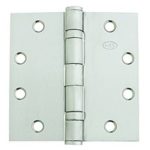 Today’s Quick Question has come up dozens of times:
Today’s Quick Question has come up dozens of times:
Can spring hinges be installed on a fire door that is larger than 3′-0″ x 7′-0″?
Spring hinges are sometimes used in lieu of door closers, as they can be a less expensive and less aesthetically obtrusive option. With that said, I always prefer door closers because they don’t just close the door, the control they door. A door closer would typically be a more reliable method of closing and latching a fire door, as spring hinges rely on momentum to get the door closed and latched. Spring hinges often require adjustment over time, and this may not be part of a facility’s ongoing maintenance plan.
NFPA 80 is the Standard for Fire Doors and Other Opening Protectives, and contains the detailed requirements for fire door assemblies. This standard is referenced by the model codes; fire rated doors, frames, and hardware must comply with NFPA 80. One of the mandates that applies to almost all fire doors is the requirement for doors to be self-closing, automatic-closing, or power-operated. This ensures that during a fire, the fire door will be closed (and latched). A fire door equipped with spring hinges and without any sort of hold-open mechanism would be considered a self-closing door.
NFPA 80 does allow spring hinges to be used on fire door assemblies, and requires these hinges to be labeled and to meet the requirements of ANSI/BHMA A156.17, Standard for Self Closing Hinges & Pivots, Grade 1. The standard mandates that when spring hinges are used, at least two must be provided.
The door size referenced in the Quick Question comes from a table in NFPA 80 – in recent editions it is Table 6.4.3.1 Builders Hardware: Hinges, Spring Hinges, and Pivots. The table states that for fire doors that are 1 3/4-inch thick or thicker, the maximum door size for self-closing spring hinges 3′-0″ x 7′-0″. The minimum hinge size and thickness are also shown in this table. However, the table shows only the most common applications of hinges, spring hinges, and pivots – it is not intended to show every possible application. NFPA 80 states: Hinges, spring hinges, continuous hinges, and pivots shall be as specified in individual door and hardware manufacturer’s published listings or Table 6.4.3.1.
If the manufacturer’s published listings allow spring hinges to be installed on fire doors larger than 3′-0″ x 7′-0″, that is acceptable according to NFPA 80 (check your state and local codes for more restrictive requirements). The question to ask yourself is, will the spring hinges close the larger door reliably? If you’re not sure…consider a door closer instead.
You need to login or register to bookmark/favorite this content.










I have never seen a spring hinge fully close and latch a door. NEVER. Most notable exception is when the door is opened to the full extension and allowed to close… or more correctly, slam like a guillotine. These are common in apartment entrances, but not on my projects…
I’m with you, Jim!
– Lori
It would be great if we only had to limit ourselves to NFPA 80, but we also have the ADA to contend with. Fire Doors are generally excluded in IBC Chapter 10 and A117-2017, but here in lovely California the State Architect can’t read or something, and has determined that CBC Chapter 11B-309.4 shall apply to ALL doors, which limits door force to 5lbs, and then the door SPEED is also a factor, where spring hinges continuously accelerate until they slam home, very much NOT as described in 11B-404.2.8. So, can you use spring hinges on fire doors? Not in California.
Another factor to consider before using a spring hinge…you have to determine if the door is required to be accessible and whether a spring hinge would meet the closing speed requirements of accessible doors.
Thanks Chris –
Yes, that is a consideration, but the accessibility standards allow doors with spring hinges to close more quickly. I’ll do a follow-up post next week. 🙂
– Lori
Question sometimes you just need a bit more, a little extra you know? May spring hinges be used additionally to a proper closer?
Hi Cynthia –
I don’t know of any rule against that, but the door would still have to meet the accessibility requirements for closing speed and opening force.
– Lori
Iam a building inspector at a multifamily housing.
Project is in California. My question is do the requirements in Nfpa 80 apply to unit entrance fire doors. Or is it commercial applications only. Appreciate any feedback
Hi Ed –
Yes, if they are unit entry doors leading from a corridor to an apartment, current codes typically require 20-minute fire doors and they must comply with NFPA 80. If you have specific questions, my email address is lori.greene@allegion.com.
– Lori